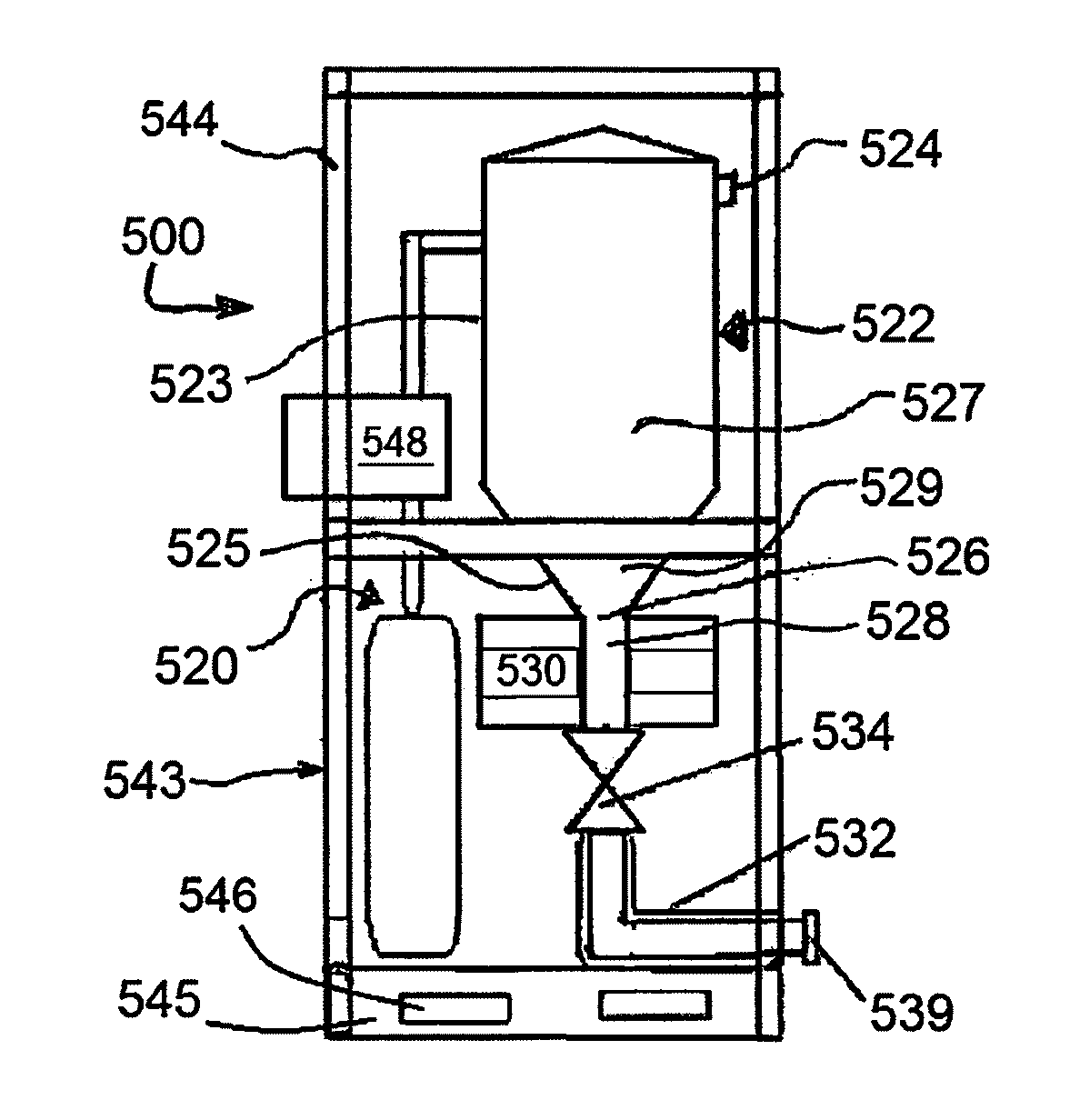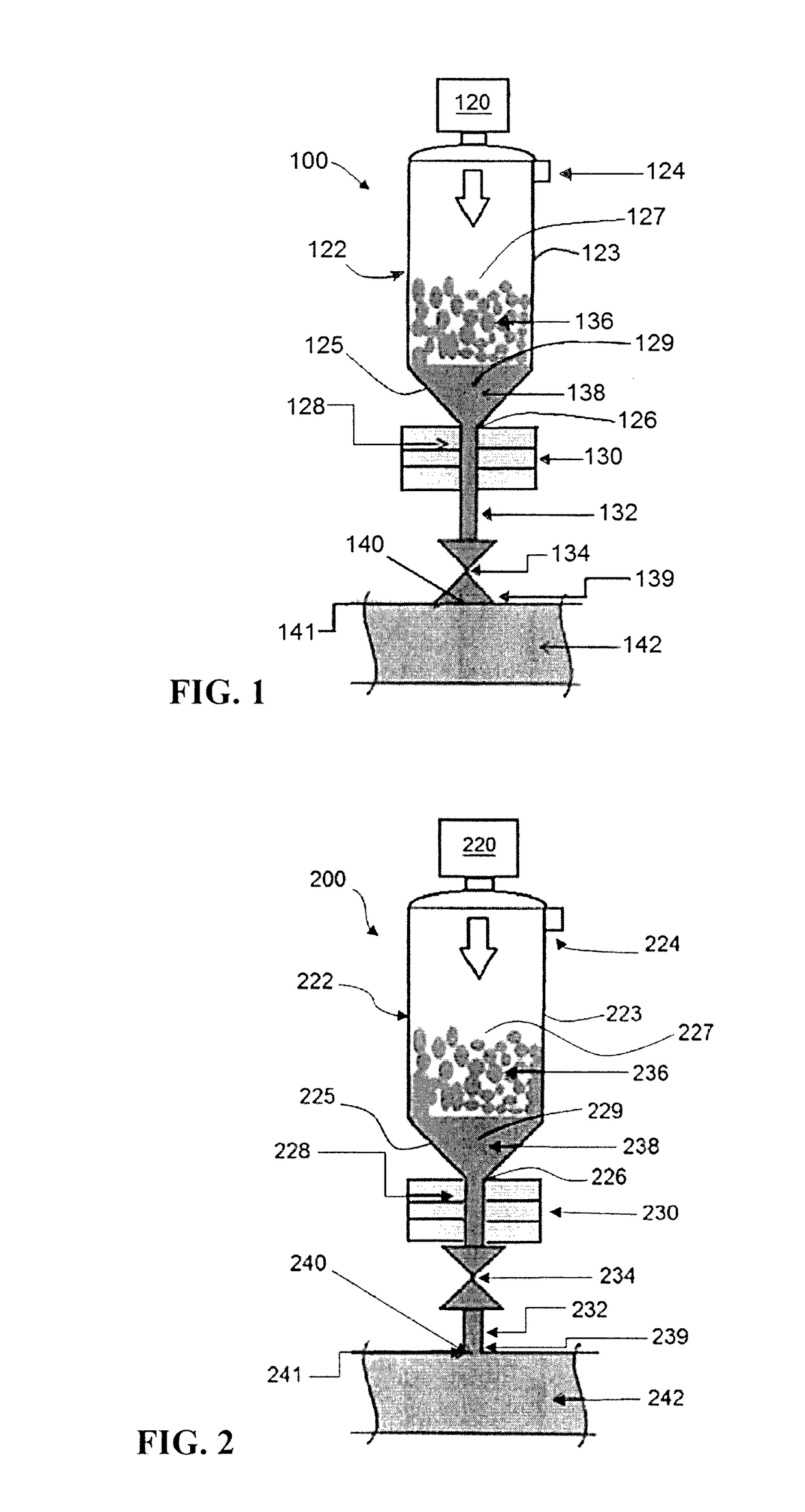Solid chemicals injection system for oil field applications
a technology of solid chemicals and injection systems, which is applied in the direction of pipeline systems, chemistry apparatuses and processes, and well accessories, etc., can solve the problems of reducing the pumping efficiency and flow of oil through the drilling, production and tubular systems, and contaminant precipitation, so as to reduce stoppages, increase accuracy and efficiency, and save energy
- Summary
- Abstract
- Description
- Claims
- Application Information
AI Technical Summary
Benefits of technology
Problems solved by technology
Method used
Image
Examples
Embodiment Construction
[0046]In various exemplary embodiments, systems, apparatus, and methods according to the invention provide for removing, inhibiting and / or decreasing foulants and / or contaminant precipitated or deposited in oilfield tubulars, pipelines, fittings, wellheads, and the like. Various systems, apparatus and methods according to the invention utilize a chemical injection apparatus and chemicals that are generally solid at ambient temperatures and pressures (approximately 20° C. and 1 atm) and that can be melted and injected by the chemical injection apparatus into the oilfield tubular at the site of use. Thus, the need for shipping large volumes of liquid chemicals and solvents can be greatly reduced, providing a safer and more efficient and economic manner of oilfield remediation than possible with current methods.
[0047]Unless otherwise defined herein, all technical and scientific terms used herein have the same meaning as commonly understood by one of ordinary skill in the art. In case o...
PUM
 Login to View More
Login to View More Abstract
Description
Claims
Application Information
 Login to View More
Login to View More - R&D
- Intellectual Property
- Life Sciences
- Materials
- Tech Scout
- Unparalleled Data Quality
- Higher Quality Content
- 60% Fewer Hallucinations
Browse by: Latest US Patents, China's latest patents, Technical Efficacy Thesaurus, Application Domain, Technology Topic, Popular Technical Reports.
© 2025 PatSnap. All rights reserved.Legal|Privacy policy|Modern Slavery Act Transparency Statement|Sitemap|About US| Contact US: help@patsnap.com



